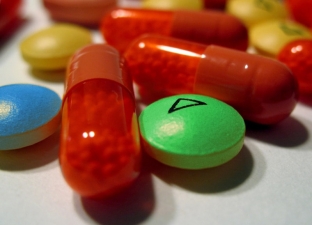Tuberculosis infection is one of the most dangerous and widespread infectious diseases today. A feature of the pathology is that the tuberculous process can affect completely different tissues and organs of the human body, causing irreversible changes in them. Treatment of tuberculosis is a very long and serious process necessary for the complete destruction of Mycobacterium tuberculosis in the human body. To date, the most effective method of treating tuberculosis is the use of a chemotherapeutic regimen.
Chemotherapeutic drugs are the main treatment for TB
Chemotherapy is an etiotropic method of treating tuberculosis, which consists in the use of an optimal combination of anti-tuberculosis drugs aimed at destroying Mycobacterium tuberculosis or suppressing their reproduction. Anti-tuberculosis drugs are specific drugs with a wide spectrum of antimicrobial activity, affecting not only Mycobacterium tuberculosis, but also non-specific pathogenic microorganisms. All chemotherapeutic drugs against tuberculosis are divided into basic and reserve anti-tuberculosis drugs.
Tuberculosis treatment:
- basic chemotherapeutic drugs for the treatment of tuberculosis;
- reserve chemotherapeutic drugs for the treatment of tuberculosis;
- side effects of chemotherapy and how to deal with them.
Main chemotherapeutic drugs for the treatment of tuberculosis
Essential anti-TB drugs are used in patients with newly diagnosed TB until sputum microbiology results are available. These drugs include:
- isoniazid – has the ability to stop the synthesis of mycolic acids, which are the main structural component of Mycobacterium tuberculosis. It is used for the treatment of newly diagnosed tuberculosis, for the secondary prevention of infected people, as well as for the prevention of infection in people who are contacts with tuberculosis;
- rifampicin – inhibits the activity of DNA-dependent RNA polymerase, which is a structural unit of a bacterium sensitive to it. It is prescribed only for newly diagnosed tuberculosis;
- pyrazinamide – has an antibacterial effect against extra- and intracellularly located mycobacteria. It is also recommended for use in cases of newly diagnosed tuberculosis;
- ethambutol – it is active only against multiplying extra- and intracellularly located mycobacteria. In combination with other chemotherapy drugs, it is prescribed for newly diagnosed tuberculosis;
- streptomycin – the drug inhibits protein synthesis by disrupting the functions of ribosomes, as a result of which the microbial cell dies. It is also prescribed for newly diagnosed tuberculous process.

Reserve chemotherapeutic drugs for the treatment of tuberculosis
Tuberculosis treatment is a rather complicated process, since mycobacteria tend to mutate and develop resistance to anti-tuberculosis drugs. In such cases, the use of reserve anti-TB drugs is recommended. These drugs are an alternative to the main drugs in case of establishing the resistance of mycobacteria to them, as well as in identifying fatal adverse reactions or contraindications to the appointment of the main scheme. Reserve anti-tuberculosis drugs have a bacteriostatic effect, but, unfortunately, they have a large number of adverse reactions. These drugs include:
- drugs of the thiamide group;
- drugs of the aminoglycoside group;
- preparations of the polypeptide group;
- drugs of the fluoroquinolone group;
- cycloserine;
- para-aminosalicylic acid.
Side effects of chemotherapy and how to deal with them
Anti-tuberculosis drugs used to treat tuberculosis cause three main groups of adverse reactions: toxic, allergic, and toxic-allergic. The former include general reactions of the body, that is, the occurrence of symptoms of intoxication, as well as symptoms of toxic damage to various organs and tissues. Allergic reactions can be varied: from urticaria and Quincke's edema to the occurrence of such lesions of internal organs as hepatitis, nephritis, damage to the nervous system, and so on. Toxic-allergic reactions include removable and unremovable dysbiotic disorders of the intestine. In most cases, adverse reactions of anti-TB drugs can be eliminated by:
- correct, balanced therapeutic nutrition;
- reducing the dosage of anti-tuberculosis drugs;
- temporary discontinuation of chemotherapy drugs;
- use of drugs in combination with vitamins and other pathogenic drugs.






Add a comment